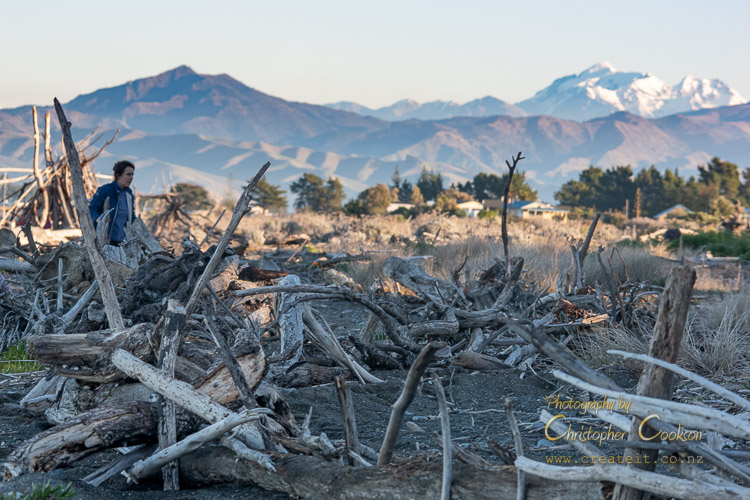Back your backyard, and your local lifeforms
By: Christopher Cookson
Last Modified: 2-1-2021 22:31

© Christopher Cookson License this image
While New Zealanders have been sheltering in their South Pacific bubble, protected from the ravages of a devastating virus that’s sweeping the world and overwhelming health systems and economies in the process, spare a thought for some of our co-habitants in this temperate paradise. It’s not so long ago in the grand scheme of things, that it was not some virus, but our ancestors, wherever they may have originated from, and inflicted death and destruction on the local inhabitants. By the time Europeans arrived here, most Māori had recognised that destruction was not sustainable, and had developed values that encouraged respect and conservation of natural resources. Europeans could have learned from the Māori experience to avoid making the same mistakes, but instead, simply repeated the process on an industrial scale.
Finally, in the 21st Century, Māori and Pākehā views have converged somewhat, with many people sharing the idea that we have a collective responsibility to care for the environment we live in.
On Sunday afternoon, my family took our first trip to the beach since summer, and the subsequent lockdown. Even in winter, Rarangi beach can be a pleasant place to be on a calm, sunny day, and when the sky is clear, you can see a good deal of the south coast of the North Island, south to Cape Campbell, and the snowy peak of one of New Zealand’s highest mountains, Tapuae-o-uenuku.
While we were at the beach, we were approached by a grey haired woman, who asked if we could help move some driftwood. We immediately realised that the driftwood above the high tide mark wasn’t randomly scattered, but had been purposefully arranged to form a barrier protecting the low growing coastal vegetation in the sand behind it from wayward recreational vehicles. The woman explained to us that along this stretch of beach, there are a couple of insects found nowhere else in the world. Perhaps a couple of bugs don’t sound like a major tourist attraction, and in fact one is so rare that apparently even when DOC looked for it last, they had trouble finding it, so why care?
I grew up watching David Attenborough documentaries on TV, and much as I enjoy fantasy entertainment involving hobbits, strange critters that are actually real are actually just as captivating. I’ve spent a small fortune on acquiring photographic equipment so that I can photograph plants, animals and fungi, and I know amongst photography enthusiasts, who spend a fair amount on equipment, travel, and accommodation, natural history is one of the big genres. People pay huge money to go on cruises to the Arctic or Antarctic just to take photos, and no matter how many photos you’ve seen of elephants or lions, there seem to be plenty of people prepared to pay big money to capture their own images. Or at least they did, until Covid-19 came on the scene.
Being stuck within the confines of New Zealand actually turns out to be quite a privilege if you’re a nature enthusiast. Sure, we don’t have any big game, but we have fascinating birds, plants, fungi, and small critters both on land and in the sea, and Marlborough with its diverse habitats from coastal temperate rainforest to alpine scree slopes has enough to keep any naturalist entertained for a long time. As Kaikōura has demonstrated with whale watching, protecting nature and economic activity can be highly compatible, however nature tourism doesn’t need to be restricted to the world’s largest animals. Some of the smallest can be just as interesting if people know they’re there. Protecting local plants and animals that are unique to a region can actually become an attraction to visitors interested in nature, but there need to be enough of them for visitors to have a reasonable chance of actually encountering them. Imagine going to Africa and most of the time, never having the opportunity to see lions. Nature safaris wouldn’t tend to sell too well.
My family spent a little bit of time helping enhance the driftwood barrier, and it was a nice feeling to think that perhaps on some subsequent visit to the beach, I might have the opportunity to photograph some of the elusive locals we were helping to protect.
Cite this page
Cookson, C. (2021). Back your backyard, and your local lifeforms. Retrieved April, 26, 2024, from https://www.marlboroughonline.co.nz/marlborough/information/commentary/back-your-backyard
Be part of the conversation
Sign up to post comments.